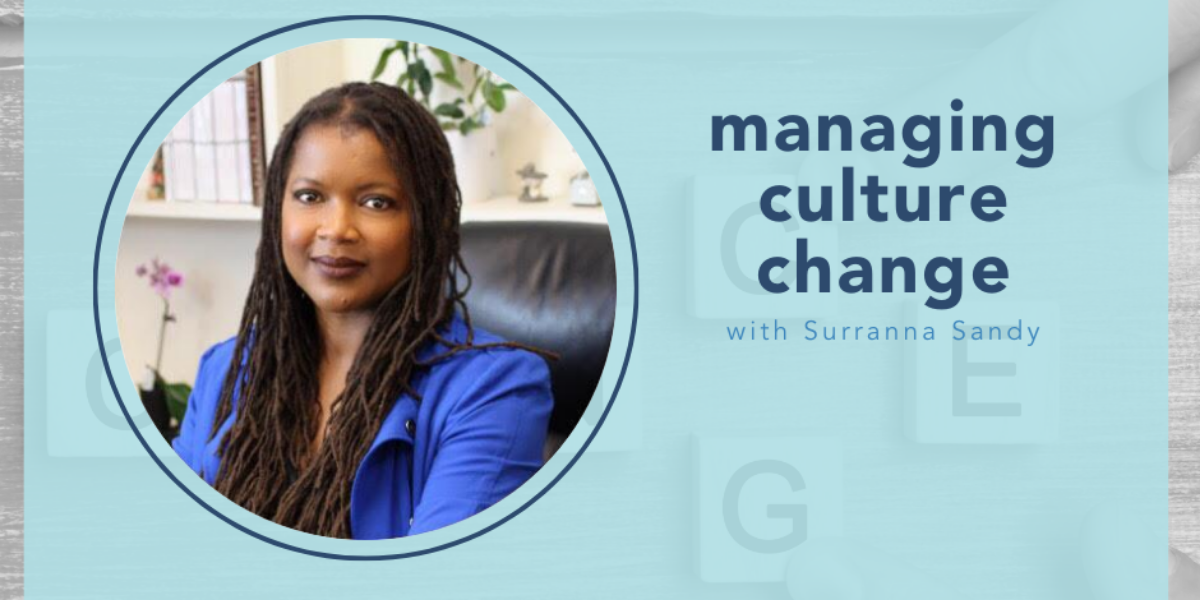When the pandemic started in March, no one knew what was going to happen.EDs at nonprofits big and small were projecting layoffs and devastating deficits. And that happened. To be sure – the impact of COVID on our sector and all of us has been significant. And mostly awful. People had to quickly adjust their work and lives to adapt. Yes. It’s been a rough year.
6 months later, we’re still dealing with an ongoing pandemic with no foreseeable end date. So, let’s recognize this: our sector has also made some huge wins. Nonprofits have become more nimble than ever. They’re shifting long existing programming online, making their workplace remote friendly, communicating to donors in ways they never tried before. Most of these things have been on our bucket lists for years, but we haven’t had the time and space to move forward with these changes.
In many ways, the COVID-19 pandemic has been the perfect storm that forced us to change. When our environment forces us to change, we become more resilient than we thought we ever would or could be. We realize that changes are not as scary as we imagined. Can we reverse engineer this process and lead necessary changes with courage?
I am so excited to launch the new season of the Small Nonprofit Podcast with a conversation on managing change. Surranna Sandy, the CEO of Skills for Change.
3 Myths that Surranna wants us to leave behind
- You can’t afford new systems. We often hear that the upfront costs of changes in technology or ways or working are not justifiable. In fact, return on investment is relatively quickly realized.
- Change means calling out people’s weaknesses. People think that supporting change means focusing on the struggles. Really, realising change means that you focus on your and your team’s strengths so that you can lead from abundance instead of from deficit.
- We can’t afford to fail. Failure isn’t always a bad thing. Actually, failure can be productive as it highlights areas where growth can be achieved.
Surranna’s tips on managing culture change
- Focus on the people not the tech. When navigating new tech or approaches to work, help staff recognize the benefits of the change on them and their work. They need to see how change will make their work more effective
- Subheading. Find peer evangelists to help drive change. Colleagues supporting each other to see not just the struggles of adapting to change, but the clear benefits that result. Encouragement coming from a peer is more effective than a top-down approach.
- Lead from Strength. Instead of highlighting people’s challenges and weakness, consider a “Strengths Finder” approach where you can identify people’s areas of strength and create an inventory from them. This will help identify what skills are still needed on the team as well as ensuring that you’re leveraging skills and abilities that you may not have known already exist internally!
My favourite quotes from today’s episode
“So let’s leverage everything with COVID to build good infrastructure and have the best tools in place that allow your clients to better access the services that you’re offering that he greatly needs. I think that’s critical for us to do.”
“I think the biggest success for us [when adapting to new ways of working] is when other frontline staff became evangelists. And they became super users and showed the value, and that was our missionaries. They’re the ones who are pushing, so it wasn’t just managers saying, “Yeah, yeah, yeah, you have to do because in your goals,” it’s your peer saying, “This is amazing. I love it. This makes my life better.”
Subscribe & Review in iTunes
Are you subscribed to the podcast? If you’re not, I want to encourage you to do that today. We have even more great interviews coming and I don’t want you to miss an episode. Click here to subscribe in iTunes!
Resources from this Episode
- The Good Partnership
- CharityVillage
- www.skillsforchange.org
- Salesforce
- Slack
- Zoom.us
- Google Classroom
- Clifton Strengths Finder
- Blackboard
The Small Nonprofit is produced by Eloisa Jane Mariano







